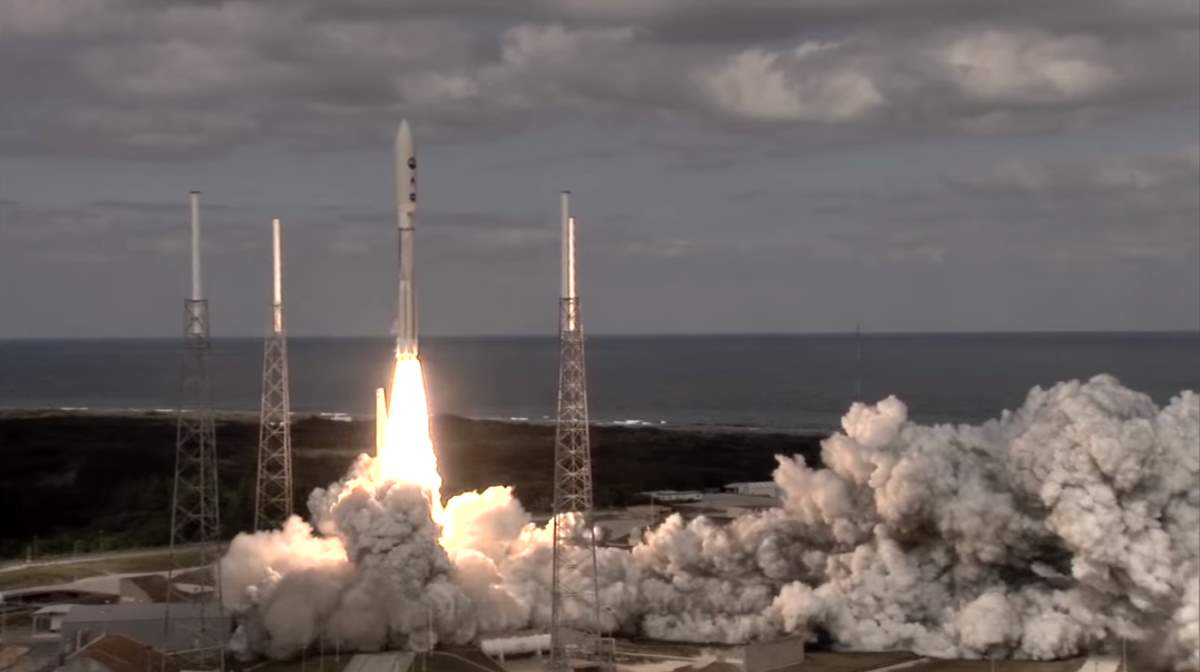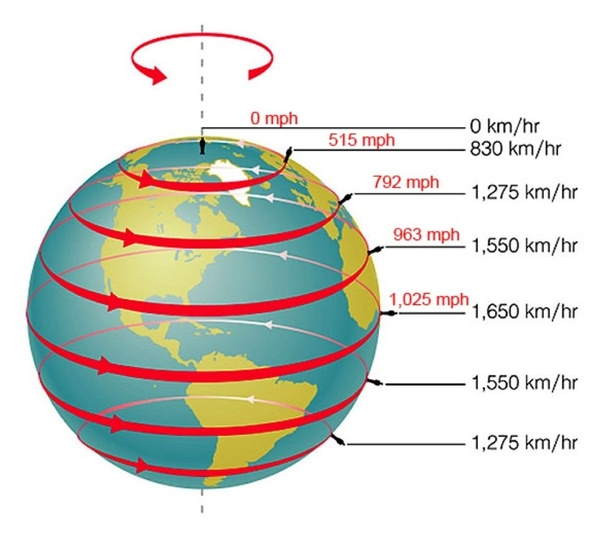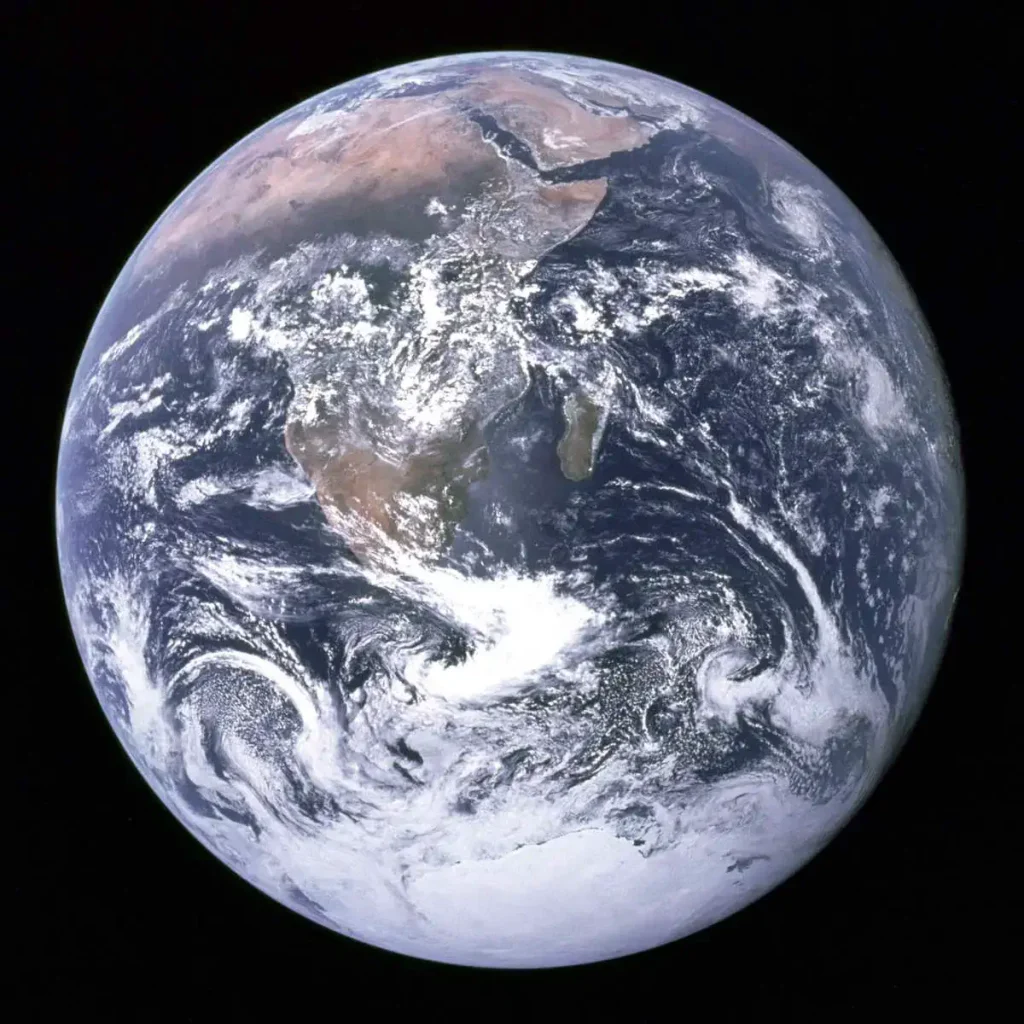Have you ever wondered why NASA chose Cape Canaveral to launch rockets? NASA’s most important rocket launches including the Mercury program, Project Gemini, the Moon Missions, and Space Shuttle lifted off from the Kennedy Space Center in Cape Canaveral, Florida.
In fact, at the first look, Florida doesn’t look like a convenient place for rocket launches: the southeasternmost state gets hit by lightning more than anywhere in the United States. And getting hit by lightning is a very bad thing during a rocket launch (see notes 1). What’s more, monster hurricanes frequently hit Florida (almost every year).
So, why NASA chose Cape Canaveral?

NASA launched its first rocket from Cape Canaveral in 1950: the Bumper 8, an ambitious two-stage rocket program that topped a V-2 missile base with a Corporal rocket. The upper stage was able to reach then-record altitudes of almost 250 miles (402 km), as high as the International Space Station‘s orbit.
Scientists chose the location for a number of reasons. The main reason is, to take advantage of the Earth’s rotation. Since Cape Canaveral is close to the equator, it rotates with the Earth at a higher speed than northern locations.
For example, if you want to get your flight to the International Space Station (ISS), you have to match its altitude (250 miles/402 km) and its speed (7.66 km per second or 27,600 km/h; 17,100 mph).
So, by launching a rocket from places close to the Equator, like Florida, you’ll get an extra speed boost.

The Earth rotates at a speed of 65.1 m/s (1,526 ft/s), or 1,674.4 km/h (1,040.4 mph) at the Equator. The Kennedy Space Center is located at latitude 28.59° N, which yields a speed of 1,470.23 km/h (913.56 mph; 408.40 m/s). This is your extra speed boost when you launch a rocket from Cape Canaveral. If you launch a rocket from one of the poles of the Earth, you get zero speed boost.
With that speed boost, you spend a little less fuel speeding your rocket up, so you could bring along some extra payload – heavier experiments or satellites.
To take advantage of the speed boost from the Earth’s rotation, rockets need to be launched toward the east. And, the only thing that is east of Florida is thousands of kilometers of the Atlantic Ocean.
So, having the Atlantic Ocean downrange reduces the risk associated with the test launches.
Cape Canaveral is also isolated from populated areas, military base adjacent, and near rail lines and intercoastal waterway.
And while Florida’s weather isn’t perfect, other parts of the U.S. have their storms too.
Cape Canaveral is also the main launch point for SpaceX.
Side note: Cape Canaveral’s area code is 321, an homage to the decades of launch countdowns taking place there.
Cape Canaveral went under the name of Cape Kennedy for 10 years
After President John F. Kennedy’s assassination in 1963, the Cape was renamed Cape Kennedy in his honor. But ten years later, in 1973, Florida’s State Legislature passed a law changing it back to Cape Canaveral. But the Kennedy Space Center still bears his name.
The name “Canaveral” (Cañaveral in Spanish), means “reed bed” or “sugarcane plantation”. As early as the 16th century, Cape Canaveral was noted on maps, although without being named. It was named by Spanish explorers in the first half of the 16th century as Cabo Cañareal.
Notes
1. Lightning and Launches
Weather is the single greatest cause of launch delays and scrubs, and about 30 percent of weather delays are related to lightning avoidance rules.
For example, if the Space Shuttle were to be struck by lightning, the most likely consequence would be short-circuiting of the electronics, including guidance and navigation systems, says John Madura, manager of Kennedy Space Center’s Weather Office. The vehicle could veer out of control; if the self-destruct mechanisms were also disabled, the Shuttle could crash into populated areas. Even if the Shuttle itself were unharmed by the lightning strike, the payload electronics — equipment and scientific experiments — could be adversely affected.
Why are so many rocket launches scrubbed?
Answering the question “Why are so many rocket launches scrubbed? Seems like rocket launches are scrubbed 50% of the time due to weather. Why can’t the rockets be made to handle non-optimal weather better?”, NASA engineer and scientist Creon Levit wrote on Quora that:
“A rocket launch is an extremely complex process, with checklists and sequences of many thousands of steps, all of which have to work perfectly. Now, people who think ‘technology == computers’ will say ‘What’s the big deal about sequences with thousands, millions, or even billions of steps? My computer executes them flawlessly all the time.“
“The answer is in the ‘real world’ of rocket launches (as opposed to the virtual world of simulated rocket launches) many of the steps involve machinery that is near the limit of what is technologically achievable, even in principle. Because of this, design ‘margins’ are often very narrow and hence there is a very low tolerance for abnormal conditions.”
“Let’s look at just one important example: liquid hydrogen rocket engines. Liquid hydrogen embrittles almost all metals chemically and thermally so they behave more like glass. And when you combine it with liquid oxygen, it releases more energy per kilogram than any other chemical reaction. Hydrogen has more than 3x as much energy per kilo as gasoline and about 100x as much as a Lithium-ion battery.”
“Combustion chamber temperature is over five THOUSAND degrees Fahrenheit, turbopumps operate at over five THOUSAND PSI and over 20,000 RPM. “
“Even with all this energy and power, a rocket barely has enough energy to put a small fraction of its ‘wet mass’ (mass at liftoff) into orbit. If you consider the entire mass placed into orbit as ‘payload‘, the best payload mass fraction achieved was in the Saturn V, at roughly 10%. Most modern, smaller, rockets achieve a payload mass fraction of 3% to 5%. “
“This is why rockets go through all the trouble to drop empty stages as they ascend. If they had to carry the mass of the empty tanks to orbit there wouldn’t be any mass left over for the payload.”
“Why is this relevant to the question? Since a rocket’s payload fraction is, as dictated by the laws of physics, so small, one does not have the luxury of everyday engineering design margins. When designing a bridge, a ship, a chip, or even an airplane, roughly speaking, you make everything twice as strong as it needs to be. So, if the weather gets rough, or something has a tiny manufacturing defect, or a voltage fluctuates the whole thing doesn’t fall apart. Not so in a rocket. The margins, while they do exist in a rocket, are much smaller.”
“To summarize – many rocket systems, particularly the main propulsion systems, have – by necessity – very narrow design margins. So any off-nominal conditions – a gust of wind, a temperature that is too low or too high, a small pressure drop from a tiny leak, or a bad sensor, can lead to failure. And failures in rocketry tend to be very expensive, especially during the launch phase.”
“Bad weather brings a host of problems: wind shear loads and lightning to name the worst. Lightning loves to hit rockets on the ground and in-flight since rockets are big metal objects trailing an ionized column of exhaust – a conductive path to ground.”
Apollo 12
Apollo 12, the sixth crewed flight in the United States Apollo program and the second to land on the Moon, was hit by lightning at launch, on November 14, 1969. Almost immediately, the spacecraft was struck by lightning after the liftoff. Specifically, the craft’s Saturn V launch vehicle was struck, causing launch controllers to lose telemetry contact at 36 seconds and again at 52 seconds. Luckily, there was no serious permanent damage.
Sources
- “Cape Canaveral: A brief history” by Back in the Day channel on Facebook
- Why does NASA launch rockets from Cape Canaveral, Florida? on Accuweather
- Why Do Rockets Launch from Florida? on Live Science
- Cape Canaveral on Wikipedia
- Kennedy Space Center on Wikipedia
- Kennedy Space Center’s official website
- Kennedy Space Center on the NASA website
- Lightning and Launches on NASA website
- How Many Elephants are Left in the World in 2025? - August 17, 2025
- Moon Landings: All-Time List [1966-2025] - February 2, 2025
- What Is Max-Q and Why Is It Important During Rocket Launches? - January 16, 2025
